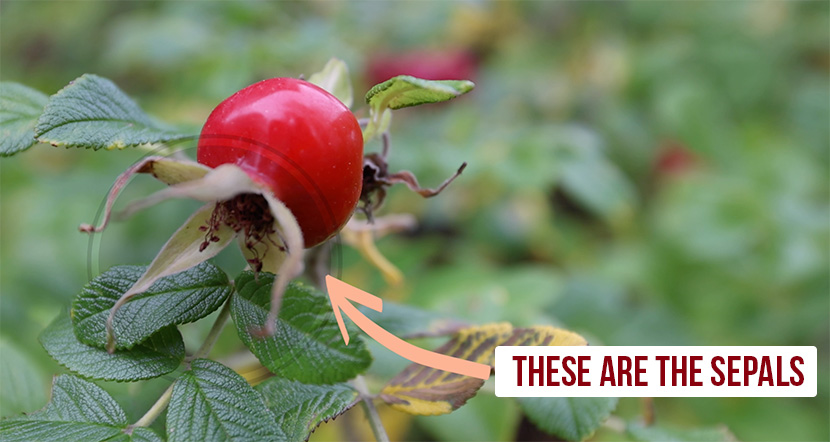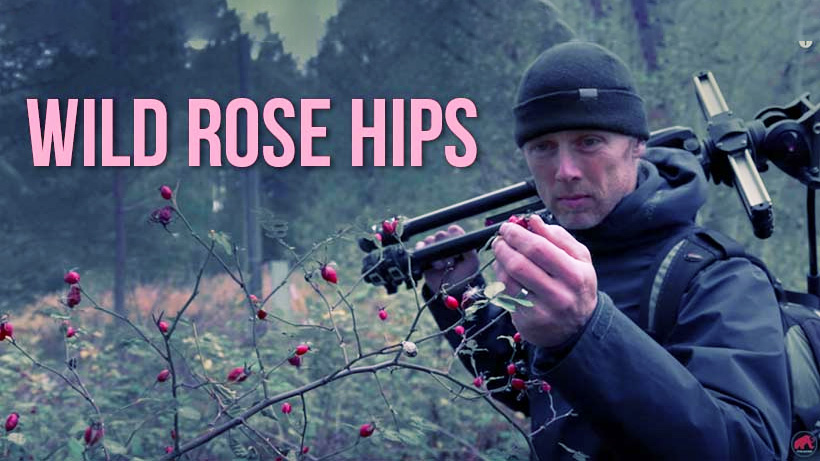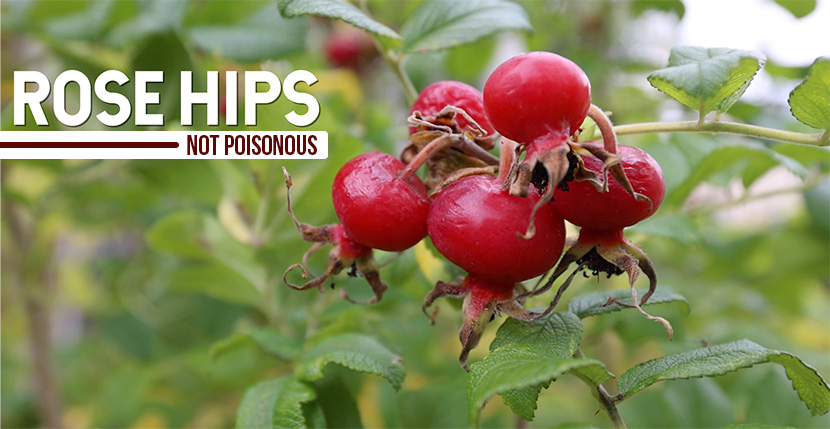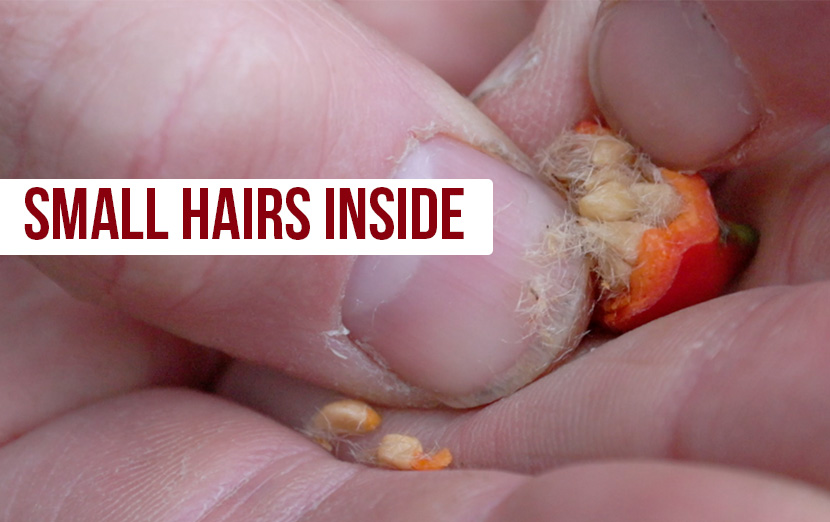Are Rose Hips Good For You? Everything You Need to Know About How To Eat Rose Hips Safely

When most of us think about roses, we think of a big bouquet you might send to someone on valentines day, and while those are definitely roses, they are not nearly as special as wild roses! Why? Well wild roses are the gift that keeps on giving. When wild roses fruit they turn into what we call rose hips, which are an edible fruit with a bunch of really amazing properties!
What is a wild rose?
Wild roses are thorny flowering shrubs in the genus Rosa, from the Family Rosaceae. This family also contains some of our other favorite types of fruits, such as pears, peaches, plumbs, and apples. The flower petals come in fives and range from white to bright pink. They also have 5 sepals, which will remain after the flower fruits. Flowers bloom in June or July, later fruiting – turning into the rose hips – in September and October.

There are A LOT of different species in the Rosa genus, and different regions have different native species, but lucky for us all of them will produce edible rose hips!
Dog Rose (Rosa canina) is probably one of the most well-known of the wild roses. It is common and widespread through its native habitat, in Europe and parts of Asia, but unfortunately is also considered a common and problematic invasive species in many places including the United States. There are also two more members of the Rosa genus that are listed as invasive by the Global Invasive Species Database (GISD): the Macartney rose (Rosa bracteata) and Rosa multiflora (AKA Baby Rose, Japanese Rose…) which both come from China and Japan. For this reason, it is important that if you are going to plant wild roses you make sure the species you choose is native to your region.

Are rose hips poisonous?
No, rose hips are not poisonous, actually quite the opposite, they are really good for you when eaten the right way; And even though there are many species of wild rose, all rose hips are edible.

What are the health benefits of rose hips?
Rose hips have been used for a long time in many cultures, in different countries, for various purposes, and are even recognized for uses in modern day medicine!
First off, rose hips are known for having some of the highest concentration of vitamin C when compared to other fruits – around 300 – 4000 mg/100 g – and as may know, vitamin C is a very important vitamin in terms of general health and boosting the immune system.
Rose hips also have other compounds with many great uses, from cleansing the blood to preventing colds, and more. Rose hips are high in antioxidants, including Phenolics, which are considered vital to human health, and can help with weight loss, preventing heart disease, boosting the immune system, and more.
As if that wasn’t amazing enough, studies have shown that rose hip powders can have benefits for people with arthritis and inflammatory bowel disease thanks to their anti-inflammatory properties coming from high levels of galactolipid!
There is also research being done around rose hips and diabetes where rose hip extracts have been shown to help alleviate the surge of glucose in the system after a meal, meaning they can help control blood sugar levels for those with diabetes. Though we aren’t suggesting they could replace insulin when needed, they can help control the problem!
You can check out this blog post to learn a bit more about why roses plants produce some of these compounds and why it’s good for us!

What are the dangers of rose hips?
Like we said before, rose hips are non-toxic, edible, and even really healthy, however there are two key things to be cautious of when eating rose hips.
First, just like anything foraged from places where people live, you have to make sure that there hasn’t been heavy herbicide or pesticide use, from sprays or even fertilizers that contain these compounds, because as you can imagine, poison to plants and insects is also a poison to us.
Second, when you pull apart a rose hip, you will notice that the seeds are covered in irritating hairs. Though these aren’t actually poisonous either, they can cause problems if you eat them. In fact, a common prank among children in some places, like Sweden, is to take these irritating seeds and put them down their friends shirts as an “itchy powder”.

When to harvest rose hips
Rose hips can be harvested soon after they form on the bush (in the fall) but many people say the best time is right after the first frost, as they will taste sweeter!
How to eat rose hips
There are many ways to eat rose hips and reap all the amazing benefits of this super fruit! Some of the most common ways are:
Method 1: Eat Rose Hips Raw
Though this is maybe the least common way, you can pick rose hips right off the bush in the fall and eat them right away. Just remember that care should be taken to remove those itchy seeds first!
Method 2: Make Nypon Soppa (Which translates to Rose Hip Soup)
Nyponsoppa directly translates to Rose hip soup. However, it’s not really a soup. It’s more of a thick juice. It can be very sweet and is often served after dinner as a bit of dessert. In Sweden you can get it in containers like the one below.
Method 3: Make a Tea
The final method is to make a tea out of the rose hips. You can always buy a packet of rose hip tea from the store, but you can also make your own. Just to be safe, in the video below we removed the seeds, added the red fruit parts to water that just came to a boil. Then we let it sit for 20-30 minutes and drank. Easy peasy.
You can also eat dried rose hips, rose hip jam, rose hip wine, and in any other way you might enjoy other fruits.
In conclusion, rose hips are not only edible, but highly recommended as part of a healthy diet! Maybe for next Valentine’s Day, consider planting some (native) wild roses instead of buying a big bouquet, so that you and your loved ones can have flowers and snacks for years to come!
If you liked this article make sure you check out our piece on how to safely eat Pokeweed!

